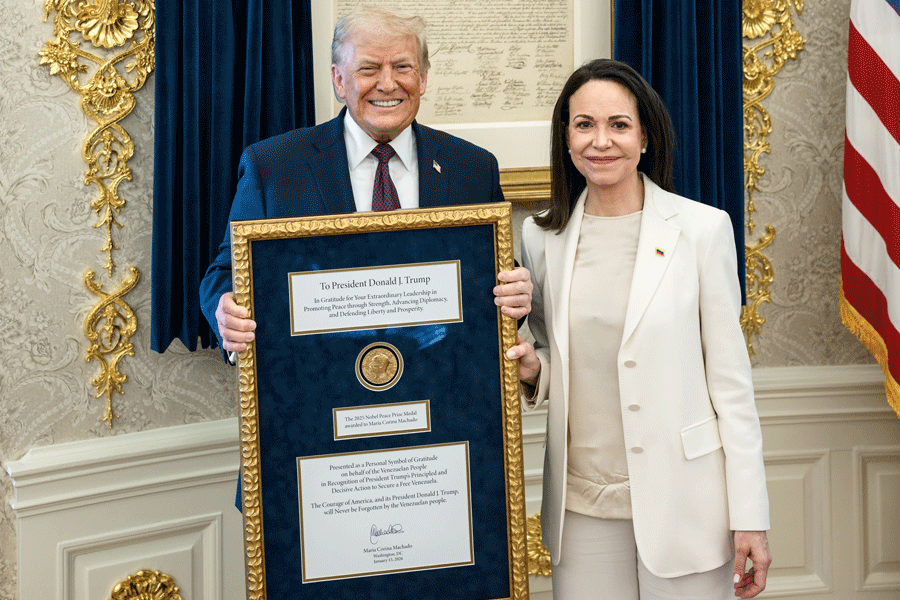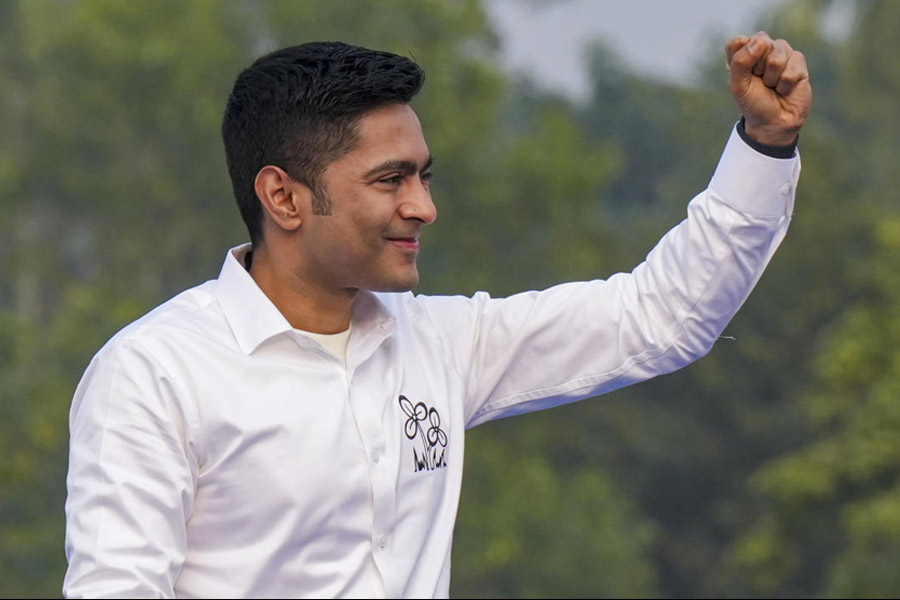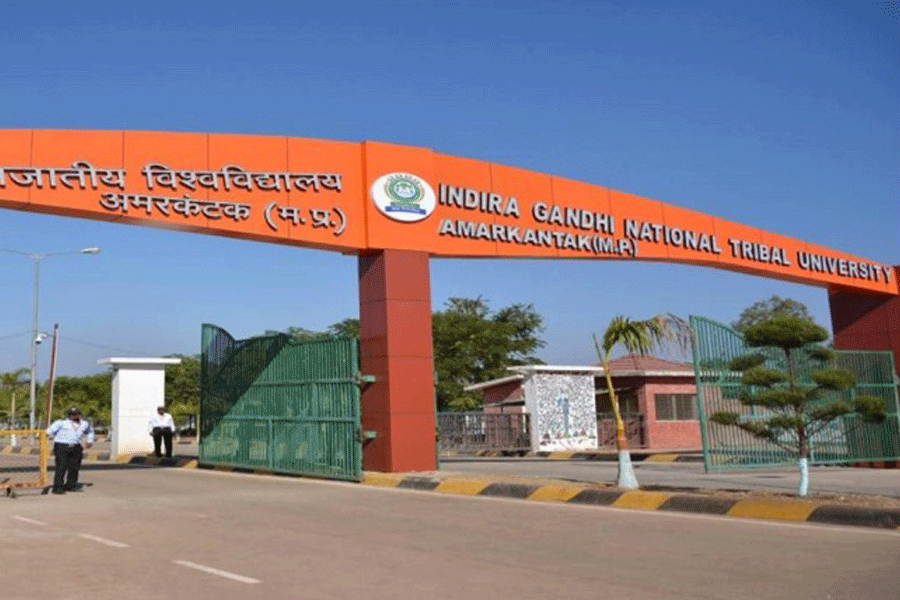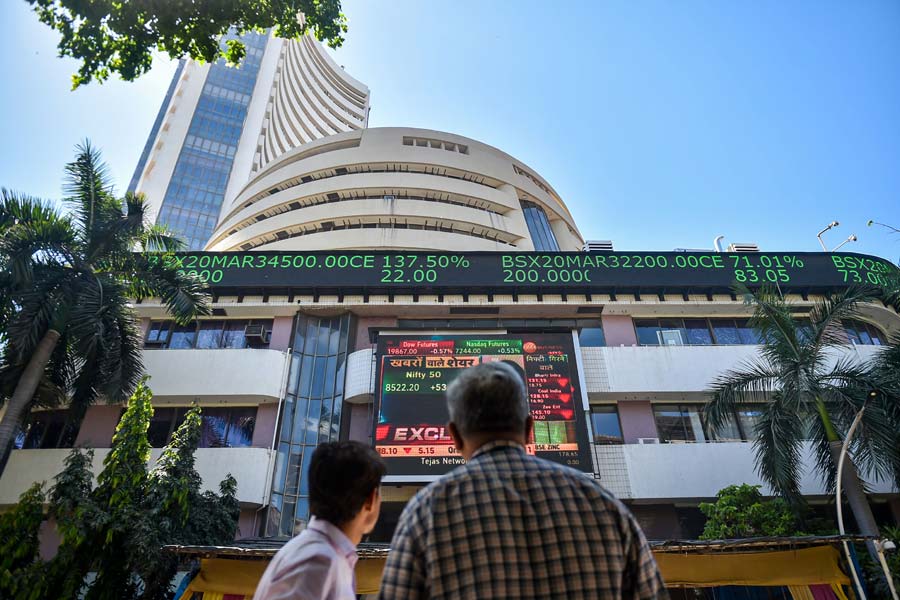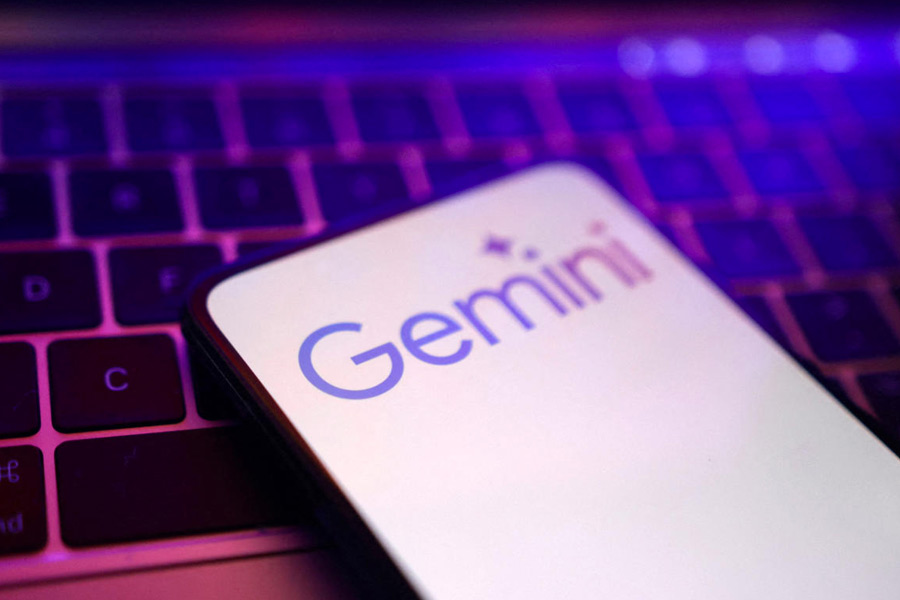 |
India’s global brand is just not an ageing gentleman with a baritone voice and a grey beard. There is a female equivalent — and she has green eyes, a fair and flawless skin, an hour-glass figure and is often described as the most beautiful woman in the world. She has a flower named after her in Scandinavia and has 17,000 websites genuflecting to her beauty. Her name is Aishwarya Rai.
What she doesn’t have, seemingly, is Lady Luck by her side. Actress-model Aishwarya Rai, arguably the only Indian woman walking the world celebrity ramp, is bad news for some people. She may be a judge at Cannes, hobnob with Hollywood and endorse diamonds. But back home, she is an artiste whose films fail to qualify as box-office hits.
Dhoom:2, released on Friday, may well hear the cash registers jingle, as first reports indicate. Rai fans have also pinned their hopes on Guru, to be released on December 29 and directed by Mani Ratnam, who gave Rai her first big break in celluloid with the Tamil film Iruvar. But while the two films may boost Rai’s cinematic curriculum vitae, a string of flops in the recent past threatens to undo the Aishwarya magic.
After the relative failure of Umrao Jaan, Rai is increasingly being branded as unlucky Ash. Umrao Jaan was meant to have been the perfect platform for Rai: it was, after all, a film that celebrated her beauty. And to top it, she was paired with someone many say is her real life beau, Abhishek Bachchan. But J.P. Dutta’s magnum opus threatens to sink without a trace in Mumbai, the other metros and even the rural belt.
It took Shah Rukh Khan’s Don three weeks to slink to a 65 per cent collection in Mumbai and Delhi; Umrao Jaan opened with only a 55 per cent box office window collection in Mumbai and a paltry 35 per cent in Delhi. Experts in the field point out that most films with the kind of budget and star cast that Umrao Jaan boasted of open with over a 95 per cent collection in the first week.
Still, movies are regarded as commercial hits only when they rake in more than what it cost their producers to make. Komal Nahta, a trade analyst who also writes a column for this newspaper, notes that Umrao Jaan’s producer made a profit of Rs 15 crore. The film’s budget, he says, was not more than Rs 12 crore. So it wasn’t quite a disaster in that sense. But the movie’s distributors, who suffer the maximum losses when a film fails, bled.
 |
Indeed, distributors in the north are livid with Rai. Distributor Dolly Singh, who lost all of the Rs 3.5 crore that he spent buying the distribution rights of Umrao Jaan for Delhi, Uttar Pradesh, Punjab, vows he won’t touch a film with Aishwarya in the lead any more. And it was only last year that he ran a loss of Rs 45 lakh on another Rai starrer, Shabd.
Yashovardhan Tyagi, a Delhi-UP distributor for Bride and Prejudice and Mistress of Spices — two other Rai films that didn’t fare well — sounds equally desperate. “It is almost impossible to make money on her films. She is commercially not viable,” he says.
The fears are real, for over Rs 150 crore has been invested in Umrao Jaan, Dhoom:2 and Guru. In Mumbai, Adlabs Films which owns the majority of distribution rights for Umrao Jaan at home and abroad, is noticeably concerned. “Audiences just don’t want to watch the movie. I don’t know why,” says owner Manmohan Shetty. “We did not expect the film to do badly. Unfortunately, distributors will lose money,” he says.
But Rai, it appears, is bigger than her films — for despite the financial uncertainties over Aishwarya-starrers, the industry continues to sing peans to her. Dhoom:2 director Sanjay Gadhvi describes her as “super-talented, with very high film IQ.” Yash Chopra, who directed Aishwarya in Mohabbatein, is equally effusive, “She was like fire when she danced to Kajra re in Bunty aur Babli,” he recalls. Film critic Anupama Chandra seconds that, and lauds her roles in Rituparno Ghosh’s Chokher Bali and in Jagmohan Mundhra’s Provoked.
| Hits and misses |
| Aishwarya Rai • Price per film: Rs 2 crore • Track record: 32 films, 6 hits |
 |
| Rani Mukherjee • Price per film: Rs 1.5 crore • Track record: 37 films, 10 hits |
 |
| Preity Zinta • Price per film: Rs 1.5 crore • Track record: 28 films, 10 hits Not everyone agrees with these trade estimates |
And, though choreographer Saroj Khan says she will always associate Umrao Jaan with Rekha — who first essayed the role over two decades ago in a Muzaffar Ali film — Khan is convinced that Rai is going to prove all naysayers wrong with Dhoom:2. “Aishwarya Rai can be rated among the best dancers in Bollywood. She has finesse and can adapt any style as she is a trained dancer too,” says Khan.
What, then, is the problem? Why do Rai’s films continue to fare badly, when other top heroines — stars, yet not in Rai’s league — ride the wave of success?
In the first place, of course, is the fact that Rai has a larger image than anybody else, because of which the hype — along with expectation — is always sky high. And, again, because of her image, Rai cannot occupy the somewhat secondary female slot that male-centric Hindi cinema pushes even its top heroines to.
But, then, Umrao Jaan — the story of a courtesan kidnapped and sold to a brothel — was a female-centric film. Saroj Khan believes the problem with the film was not Rai, but director J.P. Dutta. “A tawaif (nautch girl) does not use her hands in the way Aishwarya flays her hands about in Umrao Jaan. She does not do mudras of Bharatanatyam, but of Kathak,” she says.
The music, often described as achingly slow, was unfavourably compared with the soul-stirring melody of Ali’s Umrao Jaan. “A month after Umrao Jaan’ s release, we have managed to sell only 5,000 cassettes and CDs which is disappointing,” laments Sanjay Gupta, general manager (operations & marketing), Music World. “Shah Rukh Khan’s Don sold two-and-a-half times the number in the same period.” Music rights contribute a significant chunk of a film’s revenue.
But Umrao Jaan is not the only problem that besets Rai. The face that launched a thousand ads — ever since she first made her mark with “Hi, I am Sanju” in a Pepsi commercial with Aamir Khan — has always grabbed eyeballs, and often enough for reasons that have little to do with histrionics. Rai was in the news when her foreign agents demanded more money and a larger role for her in The Rising starring Aamir Khan, forcing producer Bobby Bedi to replace her with Rani Mukherjee. And just some days ago, she got some bad press when Indian customs confiscated a parcel that came for her from The Netherlands with 23,000 euros.
Cassandras in Mumbai also point out that films of her otherwise successful actor-boyfriends start to flop the moment they pair up with her in real life. Salman Khan, for instance, suffered a serious setback when he was in a relationship with her, as did Viveik Oberoi.
Her reported affairs have always been under the arc lights. Last year, the media was rife with reports about her relationship and an impending marriage with Abhishek Bachchan. The two are often seen together, but there has been no official confirmation of the relationship. On Friday, the two, with Bachchan sibling Shweta, were seen at a Shiamak Davar dance show in New Delhi. “Isn’t she beautiful?” Davar roared. “Yes,” the crowd bellowed back.
The world, clearly, loves her, but adman Prahlad Kakkar believes the media has always been vindictive. “I think they are pissed off with her because they never get enough of her. She doesn’t say much and has this mystique around her,” explains the advertising guru from Mumbai who launched her in her first Pepsi commercial.
The ad made everybody sit up and notice the newcomer. But bad luck dogged her even then. The Miss World of 1994 didn’t win the Miss India crown that year — despite the fact that she was the hot favourite — because she messed up a question.
Soon, though, the former student of architecture had left all her rivals behind. And within a few years, the highest-earning actress in Mumbai was chatting with Oprah Winfrey, David Letterman and Jay Leno, being featured on the cover of international magazines and talking about deals with Hollywood. Not surprisingly, Hollywood actress Julia Roberts — who is herself often described as the most beautiful woman on earth — said of the Mangalore-born: “Aishwarya is the most beautiful woman in the world with amazing green eyes and sharp features.”
Some believe that Rai’s advantage is, ironically, her handicap. The industry, many argue, is obsessed with her beauty — but seldom seems to exploit her talents. And being a director’s actor, Rai needs guidance.
Strangely, barring Sanjay Leela Bhansali, who directed her in Hum Dil De Chuke Sanam and Devdas, and Rituparno Ghosh, who selected her for Chokher Bali and Raincoat, she has not worked under too many skilled directors. “(That is why) there are some performances that are immensely forgettable and some that are very powerful,” says Anupama Chandra. “It all depends on her director.”
But then, if Aishwarya Rai’s films don’t make the cash registers ring, what makes her tick? An advertising and talent management expert believes it is the brand image that makes her saleable. “She is a product of the market. She is a brand ambassador to so many big names (de Beers, Longines, L’Oreal and Coca Cola, to name a few) and they would want to sustain her image as a winner.” Kakkar, of course, pooh poohs the theory, “She is stunning, classy and intelligent — and that is why she commands a huge price in the market,” he says.
Few in the industry hazard a guess as to how much Rai is worth. “She is her own manager,” says a source. “She makes her own terms and negotiates very intelligently. She has a ‘munimji’ sort of fellow who goes and collects the money.”
She is also a professional at work — a fact that is endorsed by Dhoom:2 director Gadhvi. “Even on the first day of the shoot, when she had no dialogue to mouth, she had learnt the entire scene by heart,” he says. “She even knew Hrithik’s lines.”
Clearly, in the industry, Aishwarya rules. There are only a few who dissent. “Aishwarya is a media star and not a box office star. She is just too phoney and plastic,” says Vinod Mirani, editor, Box Office, a trade magazine in Mumbai. But it is Dinesh Raheja, scriptwriter and co-author of the book, Indian Cinema: The Bollywood Saga, who speaks for the industry when he says: “She has a very bright future and those waiting to write her off had better watch out.”
If Lady Luck — famous for her fickle ways — would cooperate, that is.


